“Each of our albums had a synth that really excited us. The first was a Prophet ‘08, the second was the MS-20, and this time the Moog Matriarch is on every track”: Maribou State on Hallucinating Love
On their third LP, Hallucinating Love, Maribou State return with a revitalized sound after battling mental health issues
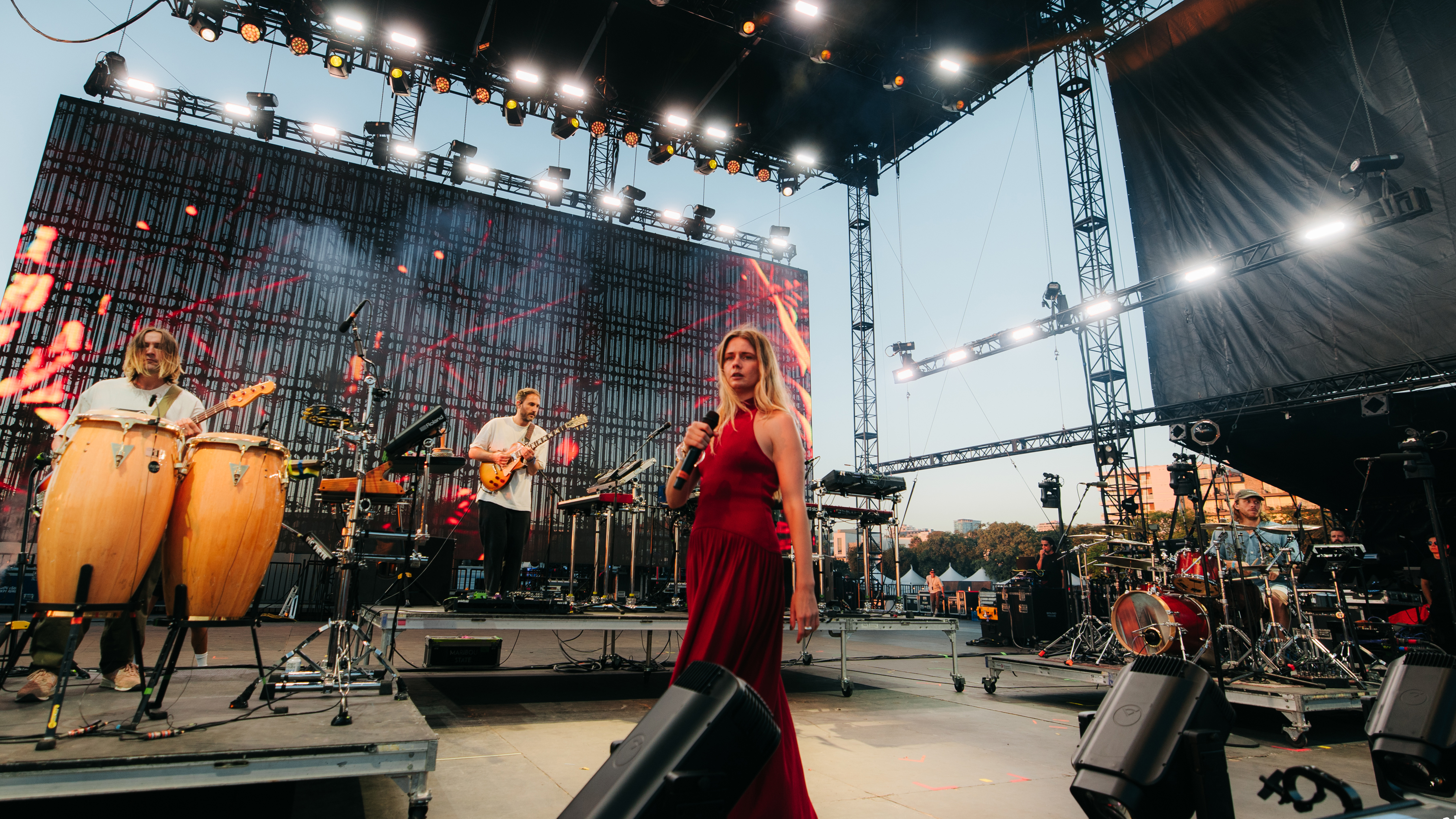
Six years after Kingdoms in Colour cemented their place as one of the UK’s most soulful and forward-thinking electronic acts, Maribou State released their long-awaited third album, Hallucinating Love, earlier this year.
Written in the aftermath of plummeting anxiety, partly prompted by an exhausting decade of touring, the LP channels the duo’s personal upheaval into music that's uplifting, expansive and deeply human.
From the earthy textures of lead single Blackoak to the euphoric lift of Otherside, featuring long-time vocal collaborator Holly Walker, Hallucinating Love is both a reflection on struggle and the dawn of a more connected relationship between Hertfordshire duo Chris Davids and Liam Ivory.
The LP also preceded a return to the stage, with the pair closing their touring schedule with a euphoric live set at San Diego’s CRSSD Festival. We caught up with Liam to discuss the making of Hallucinating Love, and how it feels to finally bring Maribou State back into the world.
Looking back to when you first met Chris at school, what were your aspirations and was becoming successful an organic process?
“We had this idea way back when we first started playing in bands that we wanted to do this, but didn't really go at it with the drive you need to be successful. I remember quite early on in the process we got a commission remix, were paid a few hundred quid and thought, “Oh, you can actually get paid for doing this?”
“We were interested in electronic music, working in a DIY space and trying to promote our own releases and put on club nights, but the project grew organically and ebbed and flowed at its own rate, and that’s something that still happens today.”
Want all the hottest music and gear news, reviews, deals, features and more, direct to your inbox? Sign up here.
Were you creating music in the DAW out of necessity?
“I did a GCSE in music and thought it would be fun to teach myself how to play guitar, but one of the course modules was programming computer music. They had Cubase, but I really didn't get on with it despite knowing that was how most people made dance music.”
“Fruity Loops was my initial entrance into sequencing and then I very quickly moved to Logic for a bit before finding Ableton, which has become our main software for the last 15-20 years. Chris made the switch to Ableton around the same time and we realised you could do so much more in the software, specifically in relation to splicing samples, pitching and reversing bits.”
Did that influence your production style?
“Being able to take a sample and mash it up with the algorithms and time-warping helped shape our sound and the way we worked in terms of being able to quickly and precisely chop and change the pitch or tempo of a sample. We were also interested in the live side and found it interesting that we could take a project we were working on, throw it straight into Ableton’s Clip View and jam live sessions.”
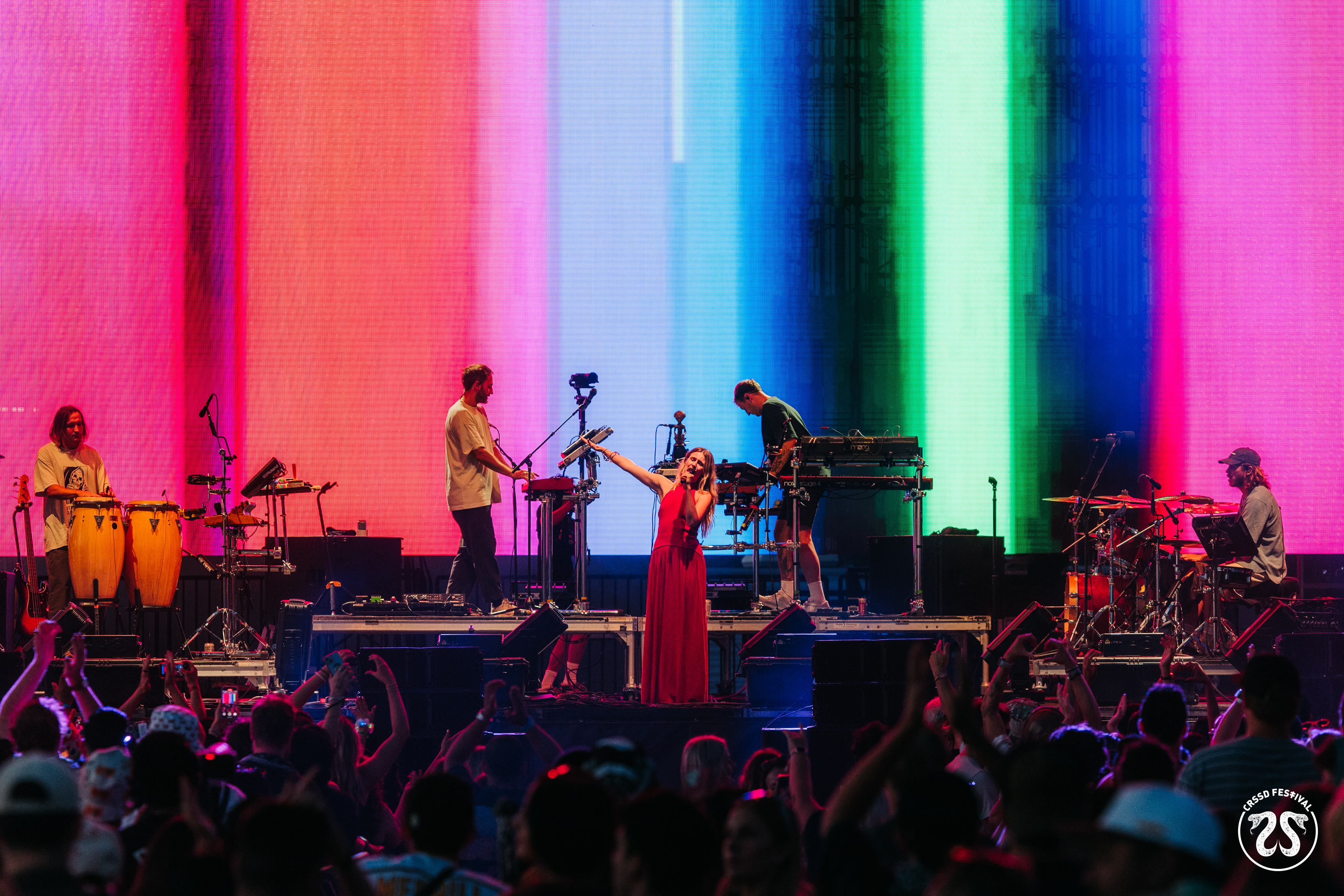
Something changed around the Covid period. It seems like touring began to exacerbate various anxieties you both shared?
“We’d actually planned to stop touring. We’d just finished promoting the second album, Kingdoms in Colour, and the touring schedule took us right up to December 2019. We were going to take a short break and start writing the third album, so from that perspective we were incredibly lucky that the touring industry shut down during the time we’d intended to take off anyway. But that period also came with its own challenges in terms of not being able to meet up in the studio, which shaped how we wrote together.”
Is that why you scrapped a draft for your third album?
“To us, every album feels like we're writing that difficult third album, because it happened with Kingdoms in Colour too. Essentially, that’s about purging leftover ideas that are still in the tank. We operate like a traditional band where releases and touring are cyclical. Obviously, while you're touring, you're playing old music and that becomes kind of ingrained in you so when we sit down to write new demos they tend to sound like old Maribou stuff.”
“To get around that, we scrap new ideas until they’re gone and whatever's born out of that starts to sound more leftfield. Dan Snaith from Caribou says the same thing – he uses his Daphni project to clear out the pipes and then he can focus on the next Caribou record. It's kind of similar for us - we have to find a way to clean out the tank and refill it.”
Around the time of making Hallucinating Love, you both had some debilitating health issues. How did you get through that period and come out the other side?
“In hindsight, it's a period that we're both grateful for, but it was very challenging individually. As you said, Chris had physical health issues, which brought on a lot of mental health challenges, and I was also struggling too and just crashed during Covid. Neither of us was in a great place and we also had this pressure that we were putting on ourselves to write the album.”
“We got up and went to the studio every day and tried to push through it, but some of those sessions weren't great, to be honest. The writing wasn’t very productive and our mental health was bad, but we did have a sense of purpose and Hallucinating Love was born from that and actually came out sounding very hopeful and optimistic. We somehow managed to metabolise all of the bad stuff and convert it into a more wholesome sound.”
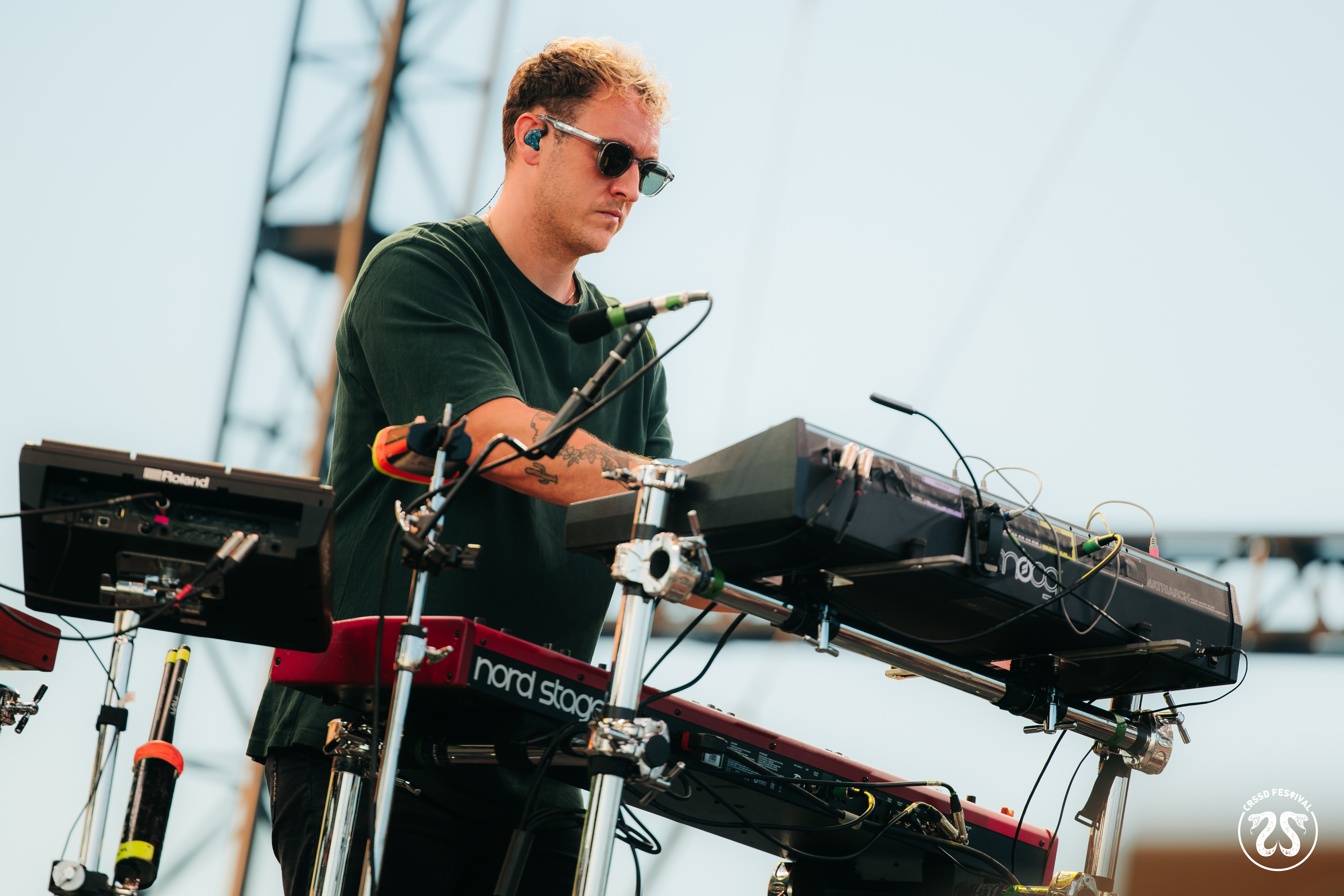
Did that experience help you to communicate better as individuals in a way that’s become creatively beneficial?
“At the time it was very difficult, but the coming closer together part was born out of our necessity to turn up for a studio session and casually ask each other how we were feeling that day, which sparked quite in-depth chats about our mental health. We started learning about meditation, wellness in general and sharing a lot of resources with each other. We both started seeing therapists, which was all new to us, but it was great to have someone to talk to throughout that process.”
“In the end, we pretty much understood how the other was feeling because we were the only two people in the boat. We were very much aligned at that point, which ultimately brought our relationship closer and created much clearer lines of communication. I think that’s allowed us to look at each other's strengths more plainly, void our egos and make us a bit more functional.”
We read that you like to record sounds in unusual environments. Are these field recordings used as a basis for songs or inserted into a track to give them a certain tonal quality?
“In the very early days, it was just a way of capturing sound that felt really tactile and textural, but in all honesty it was often used to cover up some of the plainness of the productions that we were working on. Back then, we’d record a guitar and if it didn't sound very good we’d stick a load of vinyl noise or some street level recordings on it to bed and support the sound.”
“When we first started writing, we were listening to people like Burial and Mount Kimbie, which was very textural, so using field recordings was a fun way to get to that point, but that process started to evolve around the recording of Kingdoms in Colour. The album was mostly focused on our travels and pulling different cultures together and the sampling became a way for us to tell stories and feel more connected to the ideas we were working on.”
Can you give practical examples of that?
“We’d go travelling through the South Indian backwaters, make lots of field recordings and when we eventually came to work on a song it would be inspired by the recordings we’d captured. The music suddenly felt like it had more context and we felt more tangibly connected to those moments. We've used field recordings a bit less on this new album, but there was one that we did use quite early on in the process when Chris and I were in London.”
“It was quite early days in Covid, so we masked up and had an old Marantz single-deck cassette recorder and one of those SOMA electromagnetic recorders and were basically wandering around capturing sounds from this long walk we took. We ended up using that one recording for everything on the album, which is kind of fitting because Hallucinating Love eventually became about rediscovering our roots in British dance music and where we came from.”
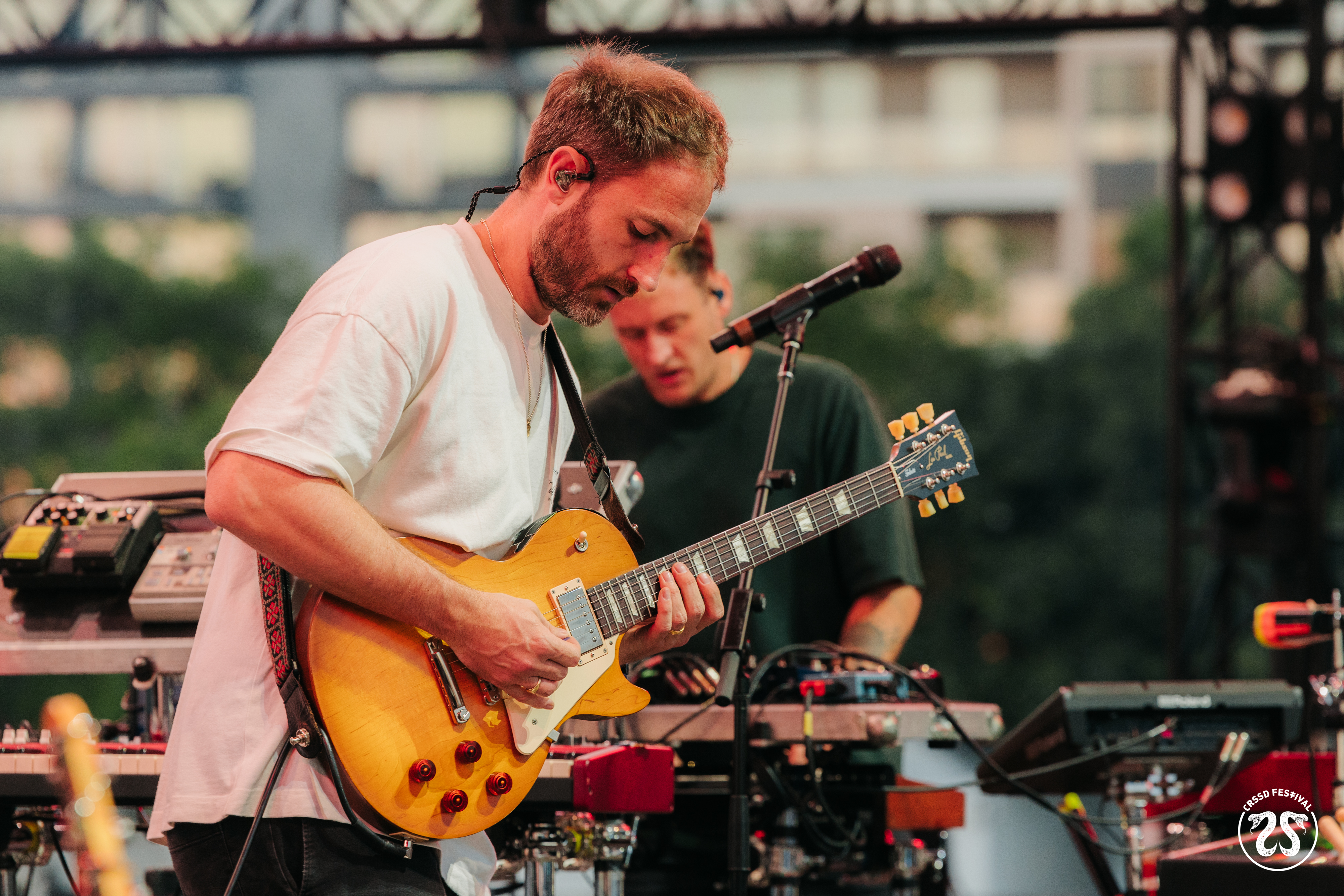
Do you have a process for making tracks based on the use of Ableton?
“In terms of generating ideas, the creative process varies each time but the functionality of it is very much in-the-box using Ableton and some third-party plugins. Having said that, we’ve always been quite focused on using hardware and outboard gear and recently went to town a bit and built a studio in London. We like using analogue gear and all the artefacts you get from that, so we do a lot of playing around with signal paths, recording real instruments and running stuff through old compressors.”
“We have a couple of quarter-inch and half-inch tape machines that we like to track to, running stuff in real-time and pulling the tape off of the tape heads to try and make it sound as strange and weird as possible. The original ideas tend to start from drum breaks and then we very quickly get into a room and play bass, guitar or keys and lay down live parts to form a demo. Once we have the bones of an idea, we’ll go into post-production mode and really drill into the sounds and get experimental with our signal chains.”
What’s the philosophy behind your hybrid approach to using analogue and digital tools?
“We've always tried to confuse or blur the lines between sounds. We strive to balance that in our productions so they feel equal parts electronic and organic, but we also like to confuse people. If a song's sounding too electronic and maybe the drums are from a drum machine part, we’ll take that, run it out through a guitar amp, mic it up in the room and capture it on tape to make it feel a bit more organic-sounding before sending it back into the DAW.”
“Similarly, if we've got a guitar part that sounds too swinging or too much like a band recording, we’ll throw it through one of our synths, run it through all the filters and try to make it sound more electronic. That criss-cross pattern of working tends to come once the main demo idea has been formed.”
Are you still using RAK Studios or have you moved away from using their facilities now that you’ve got your own studio?
“Traditionally, we've only ever worked in our own studio and go to other studios to record live performance stuff. We went to RAK when we were working on a session for Spotify and recording some tracks for them, but our studio is now very similar to a traditional studio because we have a big console and the signal paths and patch bays are unique to how we work. For that reason, when we get into more professional studios, we tend to struggle to get any ideas down.”
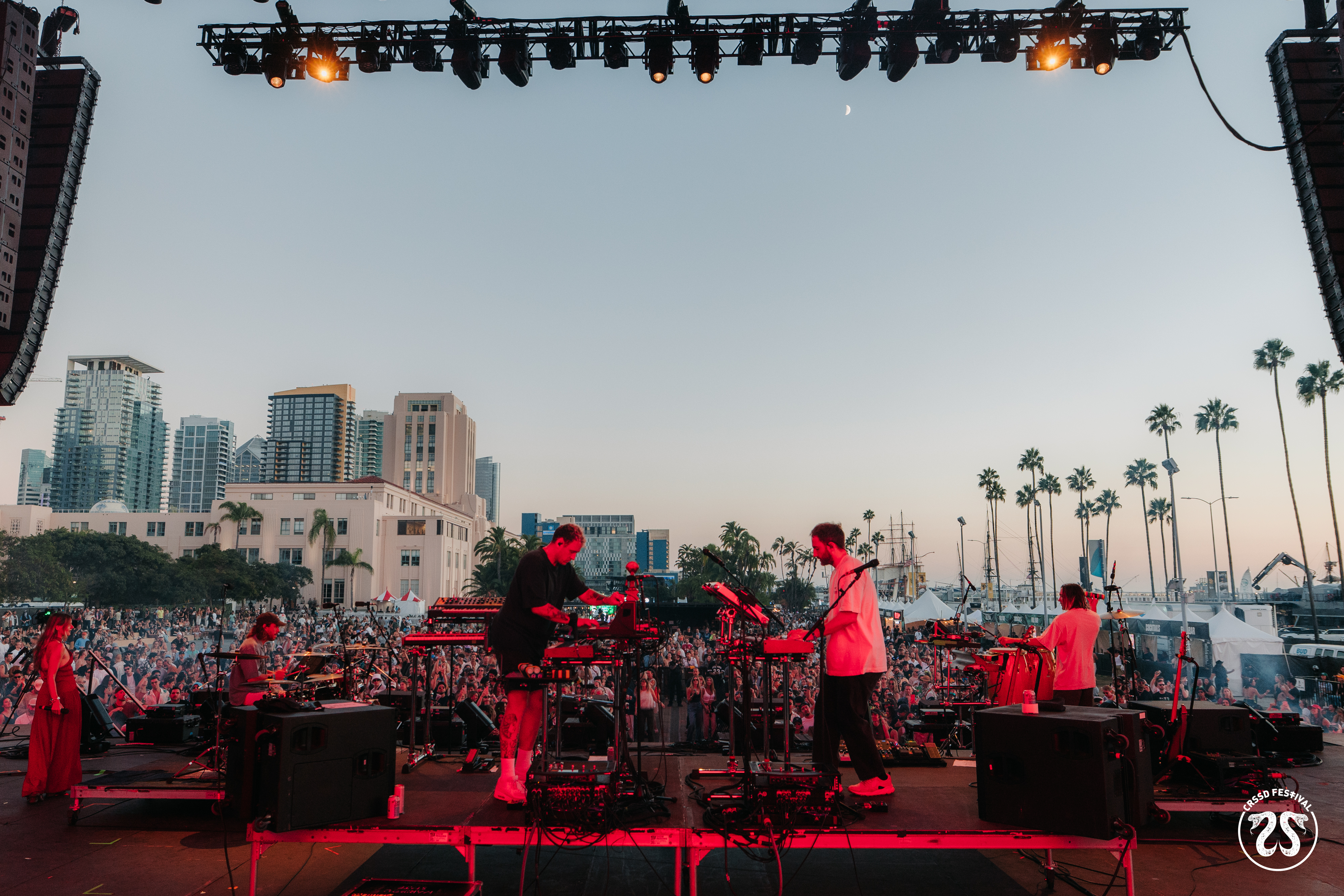
Your albums never really sounded like they were made in the box. Was it a case of becoming successful and then being able to fund yourself, so you could make records the way you always wanted to?
“Well, first of all thank you for saying that - I think we've always been interested in hardware even when we were at university playing in a band prior to Maribou. Even then, we were buying synths and old preamps, so our debut album Portraits was probably 30-40% hardware-based. Moving to a more analogue-based sound kind of grew between the second and third albums and I think that’s because we pushed the field recording stuff too far on Kingdoms in Colour, which, in hindsight, is too lo-fi sounding.”
“It was fun to explore that, but we preferred to move from analogue modelling to the more messed-up, filtered and dusty analogue sounds that you can only get from actual analogue gear like an original Korg MS-20 or Roland SH-101. We're also very selective about the plugins we use now – most of them tend to be emulations of analogue stuff.”
Which specific gear are you most reliant on these days?
“We've got an original 1176 and that’s become super important for pretty much everything we put on our signal path. For me, it just gives everything a nice squeeze. Our other go-to is the Cadac J Series console because the preamps and EQs became very important to the last record. Previously, we hadn’t really explored the process of recording parts, bringing them back into the console and really drilling into the EQ side of things.”
We've got an original 1176 and that’s become super important for pretty much everything we put on our signal path
“It’s slightly newer, but another go-to was the Moog Matriarch. Each album's had a synth that’s really excited us. The first was a Prophet ‘08, the second was the MS-20, and the Moog Matriarch is on every track from the latest album. The effects sound really nice and the delay’s cool but what we really like is that you can route stuff into it.”
“We'd send a sample into the Moog, convert the audio to CV and get the rhythm of the sample to trigger notes. Then we'd play a chord progression to sync in time with the sample, which sounds great tonally depending on which note is struck first and which oscillator fires off.”
How has your relationship with Chris developed in terms of compartmentalising aspects of your workflow?
“It changes depending on the environment. If we go into a studio to collaborate with other people, we'll go at everything together. In a more routine studio situation, the original creative ideas tend to come from Chris while the recording process falls more into my domain.”
“He'll pull together two or three really rough demos, which might be just a drum beat with a sample or chord progression and then we'll flesh them out. Once the idea’s been set and we're in motion, the process is very interchangeable - we both play a bit of guitar, keys, drums and bass – not very well, granted, but we can quickly switch modes.”
You recently played at the CRSSD Festival in San Diego. Is it just the two of you up there on stage?
“In its very earliest form, the live band was a four-piece, so we've always had other players. The San Diego festival was the book-end of our summer touring period, so it was quite a special show and we performed with a basic five-piece band comprising a vocalist, a drummer who plays a hybrid of acoustic and electronic stuff, a bass player - who also has a Moog Sub 37 - and then Chris and I, who have a more keys-heavy setup.”
What’s your live setup?
“I've got a few different synths and effect chains running from the computer, including the Moog Matriarch because it's got so much of the colour and sound of the album, but I’ve also started using a Nord Stage because the multi-sampling option has been super helpful in retrieving some of the analogue synth patches from previous albums. I've always had a Prophet ‘08 on stage because that’s also got a lot of our original patches and an MS-20, which is my favourite synth, stacked on top.”
“Chris does more guitar-focused stuff, but he’s also got a sampler, a Roland TB-303 and a couple of keyboards. It's very live and there's a lot of gear on stage, but that’s the basic footprint, although at different points we actually brought in a 12-piece string section, a 4-piece woodwind section and a 12-piece choir to really maximise the live show. I believe CRSSD was the 85th show that we've done this year, so it felt very ceremonious for us having done so much traveling and gigging this year.”
Maribou State’s Hallucinating Love is out now on Ninja Tune.
You must confirm your public display name before commenting
Please logout and then login again, you will then be prompted to enter your display name.